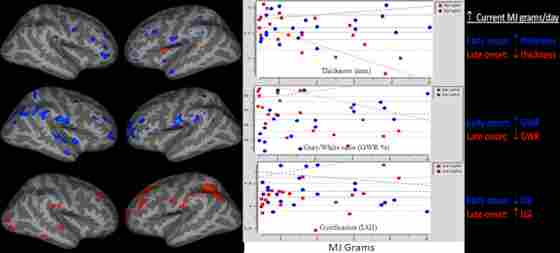Overview
Marijuana is the most frequently used illicit substance by adolescents. This is not only associated with legal trouble, educational disruptions, injuries, cognitive changes, social struggles, medical problems, and developing psychological diagnoses but also has the potential to interrupt the sensitive period of brain development occurring during adolescence. To better understand the potential effects of early adolescent marijuana use on the brain, heavy marijuana users were recruited to undergo magnetic resonance imaging (MRI). The heavy marijuana users were further categorized as early-onset users (started using prior to age 16) or late-onset users (started using at or after age 16). The results indicated that those who started using marijuana earlier, displayed cortical thickening, enhanced gray/white matter contrast, and decreased gyrification in the frontal and temporal lobes – the areas most closely associated with highly complex cognitive skills such as learning, memory, and executive function. Given these alterations in the normal brain development linked to marijuana use, earlier targeted interventions, such as warning adolescents of the long-term brain changes, may be effective.
Figure 1 displays the structural differences (MRI) in the brains of marijuana users characterized by their age of onset; before age 16, or after age 16.



